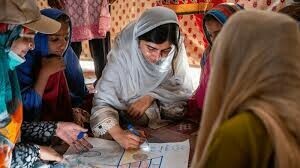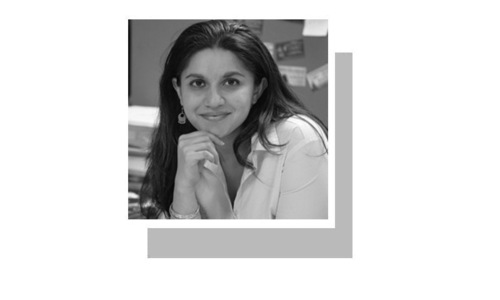THE prime minister recently declared an education emergency, a much-needed and welcome call to action.
Our education system is in critical condition and experts must now step forward to revive it. International donors and NGOs must be watching keenly to see what happens this time. Academics may be expecting invitations, polishing their PowerPoint presentations, inserting the new slogan ‘Education Emergency’ in large fonts, saving files on colourful USBs, and securing them in shiny leather bags. Here come the reforms.
This time, the focus is on the social margins — out-of-school children — an area that falls under the United Nation’s SDG-4. We need a dual-lens microscope to address this issue: one lens to focus on the complex challenge of educational access for the out-of-school children, and the other to critically examine society and the systems that have allowed this issue to swell to such an extent. The existence of 26.2 million children who have stopped going to or never have seen the inside of a classroom cannot be an overnight development, nor one that took shape over the course of a decade. It requires sustained neglect, apathy, and deep indifference to reach such a sorry state of affairs.
As a sociologist of education, I shall explore how sociology can help us better understand this intricate issue and inform our response. The task of sociology and anthropology is to make the familiar strange, so it can be viewed in a new light. As self-help author and motivational speaker Wayne Dyer said, “When you change the way you look at things, the things you look at change.” So, let us examine the challenge of educational access and continuity for the OOSC through the lens of sociology.
First, consider the social ecology of these children. The issue is not solely educational but fundamentally a socio-historical and political production. It is the result of long-term exclusion and marginalisation, forming the social context within which the issue has grown. Over the years, numerous policies and initiatives have attempted to address this, yet they often fail to tackle the root causes. These initiatives often lack a comprehensive understanding of the deep-seated issues that perpetuate educational inequality.
It is a case of the slow death of development, an invisible social virus more dangerous than Covid-19, visible only through its symptoms: multi-generational poverty, social injustice, health inequalities, oppression, human rights violations, violence, corruption, child abuse, intolerance, and hypocrisy.
Education as a social institution alone cannot resolve the problem of out-of-school children.
These factors have nurtured the root causes of educational inequality, of which the out-of-school children are a symptom. Exclusion of these children has been an incremental process through history, where society eats itself up, driven by self-destructive forces, like an autoimmune disease. The powerful centres reproduce peripheries, which in turn produce social margins whose existence becomes almost invisible. Their condition is reminiscent of the insect in Kafka’s Metamorphosis, ambivalent and alienated.
Education as a social institution alone cannot resolve this problem caused by multiple societal failures. It needs support and protection through values of social justice, human rights, and freedoms. The issue of out-of-school children should be seen in its social ecology, a symptom of broader system failures.
We must recognise that the challenges of educational inequalities cannot be addressed in isolation; interventions should be supported and sustained through global and national commitments to social justice and civic responsibility. A composite response to the challenges of out-of-school children requires multisectoral, multi-institutional, and multidisciplinary inputs. Therefore, achieving SDG-4 needs to be supplemented with other SDGs, especially SDGs-1, 2, 3, 5, 6, 16, and 17.
Second, consider the variability within out-of-school children. This group is not homogeneous but diverse in demographic character, physical location, degree of mobility, and range of visibility. This category includes street children, rag pickers, child beggars, nomads, children of seasonal migrants, child inmates, and child labourers. Each subgroup faces unique challenges and barriers to education, necessitating tailored approaches and interventions. Education for all means all these children have a fundamental right to not just education, but health, and freedoms. Therefore, a one-size-fits-all solution is inadequate. Different strategies are needed for different groups.
Third, we must diversify the curriculum and pedagogy. Inclusion means attending to differences, and the diverse needs of this group require corresponding diversified pedagogical methods. Traditional schooling is not a panacea. School shortages and distances are major obstacles to educational access. We need to provide flexible, situationally relevant learning opportunities tailored to the material and social realities of marginalised children.
Both educational content and pedagogical methods need innovation. We should focus on learning instead of schooling. Schools are place-dependent institutions, while learning can be spatially mobile, online, media-based, hybrid, or distance-based. The concept of learning opens up multiple possibilities independent of physical schooling. It is also less costly. However, the learning model needs proper understanding of non-formal educational approaches, which are currently underexplored in our context.
Additionally, Unicef’s Temporary Learning Centres, which proved viable during the 2022 floods, can be multiplied. A comparative educational analysis, such as innovations for out-of-school children in Bhutan, Sri Lanka, and Kerala (India), offers valuable lessons. In these regions, adaptable and community-centred educational models have shown significant success, demonstrating the importance of context-specific solutions.
These thoughts aim to inform the response to the prime minister’s call for educational revival. We need fresh thinking and action, not rhetoric. As Einstein reminds us, “We cannot solve our problems with the same thinking we used when we created them.”
May our education system heal quickly, so no child is left behind.
The writer is a sociologist of education and an ethnographer. He holds a PhD degree from McGill University, and is an assistant professor at the Sukkur-IBA University.
Published in Dawn, June 14th, 2024















































Dear visitor, the comments section is undergoing an overhaul and will return soon.